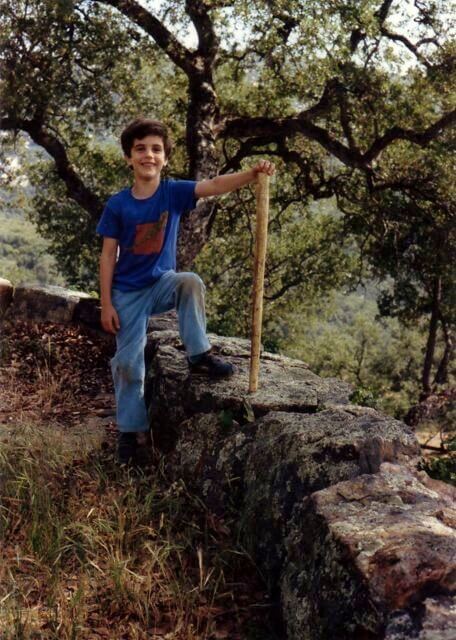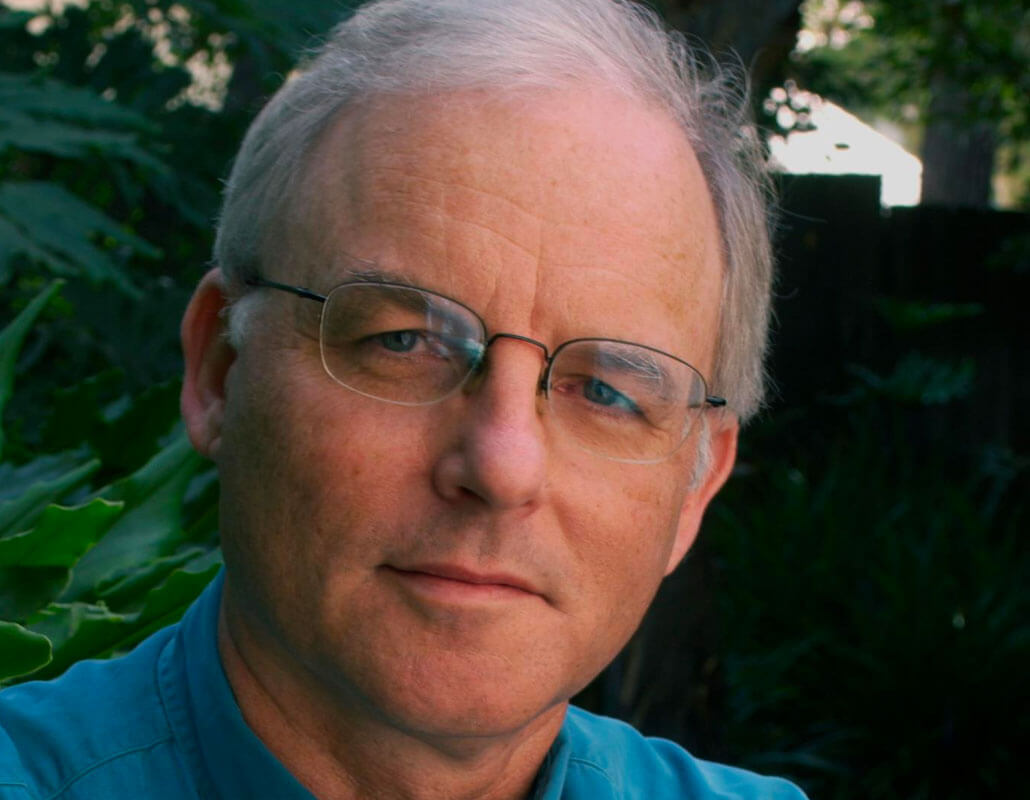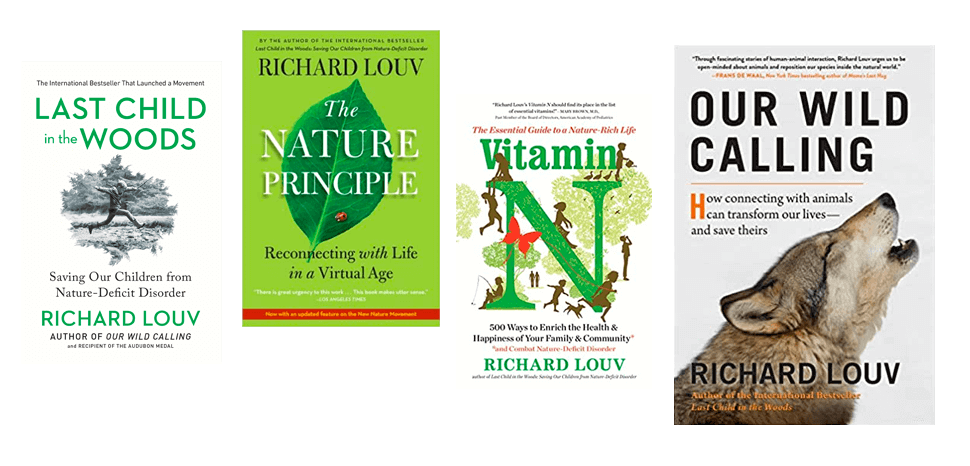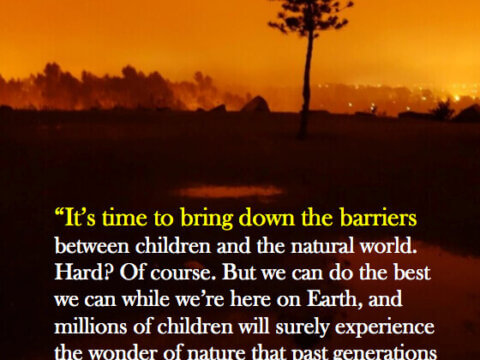Ten ways camps can reduce Nature-Deficit Disorder and build support for their programs
Adapted from keynote address, American Camp Association National Conference, Feb. 22, 2012
When I was a teenager, I resented camp. Because I never went to camp.
Every summer, my buddy Pete would disappear for weeks. He’d leave Kansas and head to Sanborn Western Camp in the mountains west of Colorado Springs. For me, the hot, humid weeks dragged on. Then he’d come home telling tales of adventure in the alpine Oz.
Stories like this: “Once while picking ground plums, which tasted like raw green beans, we uncovered an ancient hunting site full of arrowheads, charcoal and flint chips.” He also had encounters with bears, coyotes, and mountain lions.
What could be better than that?
Today, Pete often talks about what he learned during those summers in Colorado, especially the values of community and nature, and how his camp adventures amplified his later life. He works as a Montessori teacher now, exciting his students’ imaginations with stories of wild creatures, large and small, just as he told them to me. And filling his classrooms with life.
Since Pete’s treks to Colorado, the core values of most camps have remained strong. But times have changed. I recently asked Barry Garst, the American Camp Association’s director of Program Development and Research Application, about the trends shaping the future of camps, especially those with a nature emphasis.

Among the trends: a gradual increase in camp participation, with day camps (some in urban areas) increasing in number faster than resident camps. Family-oriented camps are also increasing, and that trend is associated with another growing subset of camps for young people with disabilities.
Some camps remain nature-centric, he said. More often, camps provide a mix of experiences, wild, domesticated and technological. “They wouldn’t necessarily call themselves nature-based camps,” he said. “But they do get kids outside in nature. Few places other than camps provide children with the opportunity and freedom to connect with nature and also caring mentors.”
Now and then we read stories about camps shutting down or selling their land to make up for budget shortfalls or to consolidate services. However, Garst points out that ACA camps are responsible for preserving as many as 170,000 acres of undeveloped land, an area 30,000 acres larger than Zion National Park. Still, traditional camps could use a little help.
So how can nature-oriented camps thrive in the future? How can they reach more children? Here are a few possibilities, some already becoming reality:
1. Strengthen camp alumni groups. More often than not, camp alumni are faithful financial supporters. Social networking is already gathering alumni across great geographic distances. Garst and I talked about the possibility of creating a free, downloadable toolkit for camps on how to use Facebook, Twitter and other social networking methods to build alumni groups and attract financial support. Also, offer ways for kids and camp staff to electronically share their experiences.
2. Jenny Morgan, founder and co-chair of The Leave No Child Inside Central Ohio Collaborative, suggests that traditional camps, some of which are at risk of closing or may have already closed—often a great loss—need a “national preservation campaign.” Of course, supporting ACA also helps.
3. Encourage young and older people involved in camps to take nature back to their own families and communities. Send every child home with C&NN’s free Families Together in Nature Group Planning Guide, which shows parents how to join with other families to get outside. Other groups also offer good tools and events, including the National Wildlife Federation’s annual Great American Backyard Campout.
4. Help create a Homegrown National Park. Doug Tallamy, a professor at the University of Delaware, encourages people to replant their yards with native species to create a vast network of biodiversity corridors — ones that help make our cities into biodiversity engines, improving human health and well-being. Camps could dedicate part of their own land to the cause, and encourage campers to plant native plants to create bird and butterfly zones at home.
5. Camps can increase their knowledge of “natural cultural capacity” — the strengths and abilities of different cultures to connect with the natural world. What can our diverse cultures teach one another?
6. Work more closely with pediatricians and other health professionals, especially those now recommending nature to their patients for better health. Some park districts are partnering with pediatricians who write “park prescriptions.” Why not encourage camp prescriptions?
7. Create new and expand current community partnerships, including ones with educators, who are becoming more aware of the cognitive benefits of learning in nature (including the fact that most science is learned outside the school classroom).
8. Camps can take a leadership role, along with conservation and environmental education groups, in helping libraries become nature information centers for their bioregions — and in the process build their own constituency. Faith-based camps can do much to engage churches, synagogues and other religious organizations with this issue.
9. Help educate parents and children about the benefits of nature on children’s ability to learn and their mental and physical health, the bonds of their families, and the fullness of their lives.
10. Help lead a new nature movement. ACA and individual camps should be major players in an emerging, broad-based effort that includes and goes beyond traditional definitions of environmentalism and sustainability. They can help people imagine and create a society in which our lives are as immersed in nature every day — where we live, work, learn, play (and camp) — as they are in technology.
Whatever tools camps use, old or new, the greatest gift they can give is a reborn sense of wonder. In that spirit, I’ll offer a story my buddy Pete brought back from that Colorado camp. He told me he saw wolves, one white and one black. He added, “Only the kids with me believed me.”
I was one of those who didn’t believe that Pete had encountered wolves. But recently, I checked the history. The Colorado Department of Resources reports that, while wolves were, by official measure, eradicated in the 1930s, “there have been sporadic reports of wolves in Colorado over the decades” — none confirmed. They may have been wolf-hybrids or dogs or, just maybe, wolves.
One more reason I wished I could have gone to summer camp.
-
Network News
POLICY UPDATE: Policy and advocacy for the children and nature movement
-
Voices
Binoculars, bald eagles and my journey as a Black birder
-
Richard Louv
THE WONDER BOWL: Ten Spring and Summer Nature Activities for Kids and Adults
-
Network News
Minneapolis Spotlight: The promise and possibilities of parks for youth
-
Voices
Why nature is my motherhood ally







Commentaries on the C&NN website are offered to share diverse points-of-view from the global children and nature movement and to encourage new thinking and debate. The views and opinions expressed are those of the author(s) and do not necessarily reflect the position of C&NN. C&NN does not officially endorse every statement, report or product mentioned.